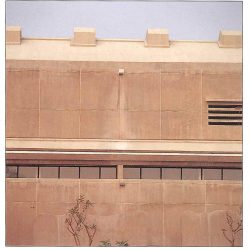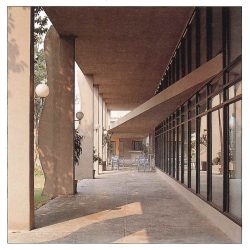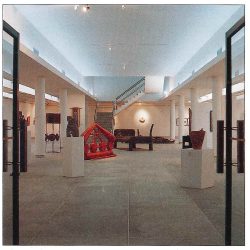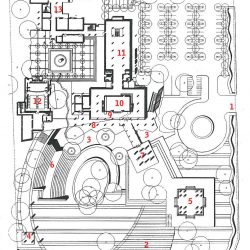CHIANG MAI UNIVERSITY OFFERS AN OPEN-DOOR POLICY TO THE COMMUNITY WITH ITS MUSEUM OF MODERN ART DESIGNED BY THONSILP ARCHITECTS

Originally published in art4d No.48, April 1999.
As the world gets smaller by the day, two important questions crop up constantly: How do we keep up with all the mind-boggling changes? And how are they changing us? Yes, it’s hard not to feel like you’re being swept away by these powerful, hurricane-like forces. People in the Third World are finding it especially difficult because the changes are coming from without, not from within. Theerayuth Boonme, a renowned scholar, has put forward a new notion of political development, which insists that social and cultural dynamics must be balanced against politics and government. In other words, the more our society needs political development, in turn, we need a more relevant culture. The current saying, “think globally, act locally,” also proves how we need to foster strong community ties with others.

Originally published in art4d No.48, April 1999.

Originally published in art4d No.48, April 1999.
In Thailand, the ancient city of Chiang Mai may have the strongest local identity and cultural dynamic. It is also one of the few provinces funding a local art gallery. Thonsilp Architecture won the competition and Chatri Ladalalitasakul and Vacharin Supanyo are the architects responsible for this project. Now around 40, Chatri, who is the head of the design team, came of age during the political crisis in October of 1973. True to his political roots, he still reveres Herman Hesse and Leo Tolstoy, whose literature connected him with the content of various materials as well as the Oriental philosophy behind many of his buildings. As for the design process itself, the company began by formulating conceptual designs in abstract terms before breaking it down into three main areas: context, form and the presentation of Thai architecture, and finally, techniques.

Originally published in art4d No.48, April 1999.
This new project is not supposed to be a tourist attraction, but a place where locals can gather to hang out and share a sense of community. Set in the heart of the former Lanna Kingdom, the new gallery has been influenced by these ancient cultural dynamics, as can be easily seen in the shape of the roof. Something of a nature retreat, the land surrounding the gallery is full of shady trees. At the front of the building there’s a multi-purpose plaza and amphitheater along with trees and a sculpture garden. The parking lot, meanwhile, is tucked away in the back. All the other buildings – the auditorium, the administration offices, and the gallery itself – also have a distinctive Lanna character.

Originally published in art4d No.48, April 1999.
But let’s not forget about the technical side. Thonsilp Architecture collaborated with Thanit Jindawnik on the lighting. What they’ve achieved is a wonderful balance between natural and artificial light. (The former is particularly important for delicate works of art.) A skylight on the top floor also works wonders for letting the sunshine in. Also, it should be noted that the massive bulk of the building is not only because of the function, but to act as a sound buffer against turbine-whining airplanes. The edifice looks even bigger right now because the semi-outdoor parts have not been built yet. Still, the treeline helps to give a sense of the divisions between artists and normal people, old and nascent cultures, and between the community and the university, which connotes the idea of culture as a social mechanism. The architect has also designed a little canal as a kind of fence to stress the interconnection between these two parts of the community. In a nutshell, this gallery was aimed to fulfill its function as a meeting point between the artists and the members of the community.

Originally published in art4d No.48, April 1999.

Originally published in art4d No.48, April 1999.

Originally published in art4d No.48, April 1999.
TEXT: WORAPON KLAMPAIBOON
Originally published in art4d No.48, April 1999.







